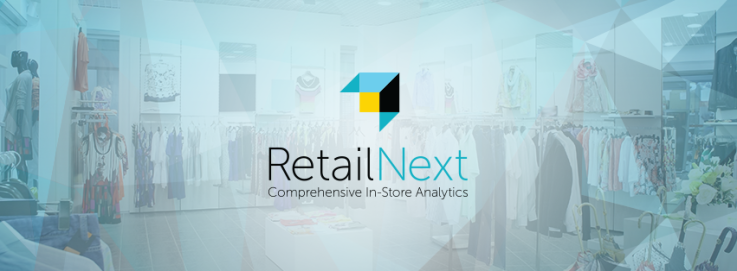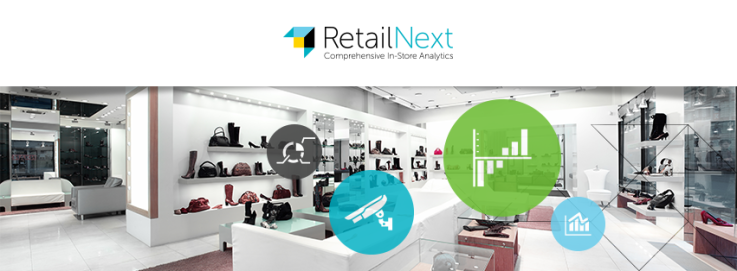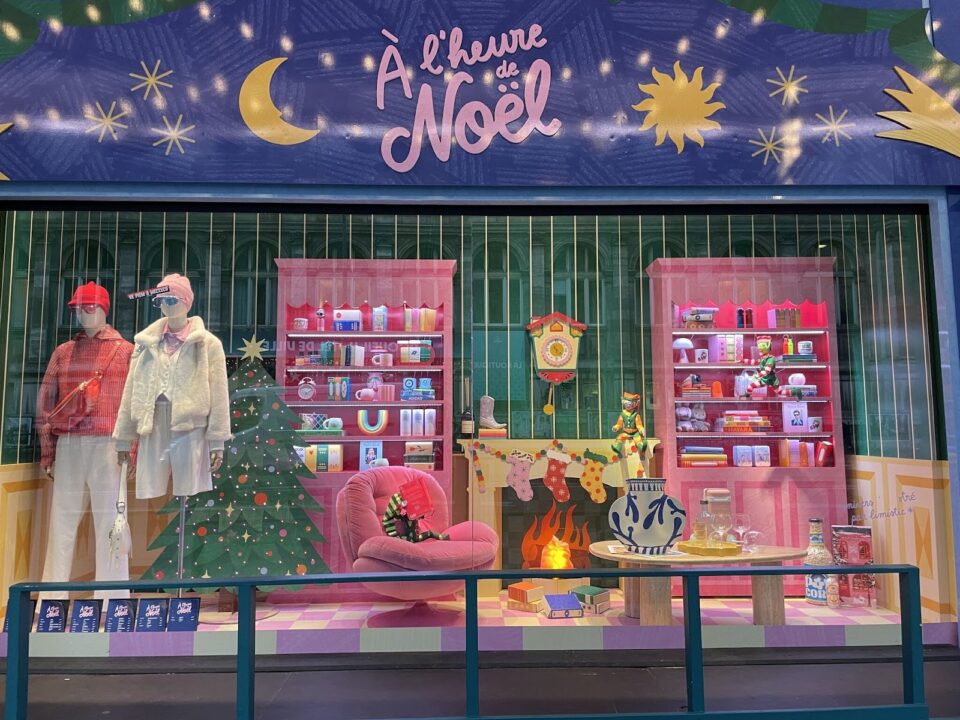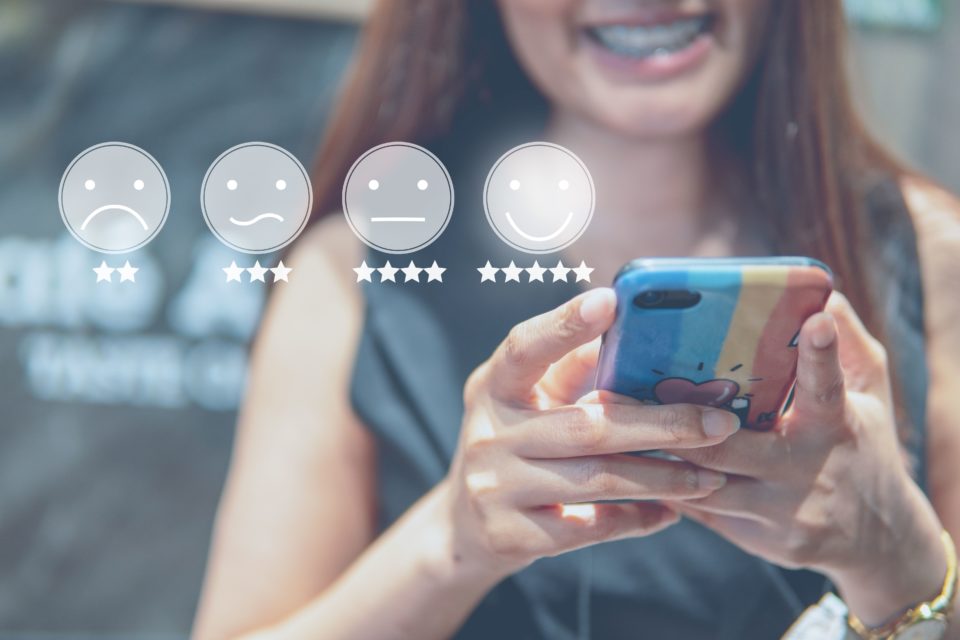RetailNext is enhancing customer experience – Bridget Johns shows how

A market leader in Big Data solutions for brick-and-mortar challenges, RetailNext technology delivers comprehensive, real-time analytics that empowers worldwide retailers. We talked to Bridget Johns, Head of Marketing and Customer Experience at RetailNext, on the retailers using it to its fullest potential and how to enhance the in-store experience.
Can you describe RetailNext in a sentence?
It’s a platform to measure and optimise customer experience in retail.
The founders started the company when they realised physical retail was here to stay, but that it needed to start evolving. It’s so important to understand what’s going on in stores, to understand the customer journey and how they navigate through the store. Our systems give retailers fantastic visibility into these things.
How are you working with retailers currently?
Brands are using RetailNext to measure shopper interaction and engagement in a variety of ways. Brands are looking at the number of people walking past, how customers navigate the store, which store assistants they interact with, which touchpoints they engage with, whether they look at digital signage, the frequency and duration of the visit. If they change any aspect of the store, they can quickly understand how these changes affect the store’s performance and sales.
They can also see whether shoppers are repeat visitors, and whether they’re men or women, and which age bracket they fall into. Our systems use anonymous video capture rather than facial recognition. They assess shoppers’ faces when they come into the store, they don’t recognise shoppers’ individual identities.
Can you give us a ballpark price for an installation, and the results you typically see?
A basic installation in one store could cost around $2000 for the year. If the client uses one of our sensors, though, they could find that they no longer need other systems like beacons and footfall counters. We’ve found the systems can deliver CapEx savings of 40-60%.
There’s a good ROI when brands learn how best to balance staffing with store traffic – once they know the store’s busiest times and match that with the highest levels of staffing, they can see sales rise by around 6-8%.
Our systems help brands avoid unnecessary expenditure, too – they can now test and measure the impact of a new concept before rolling it out, which massively minimises risk. In that situation, an installation would pay for itself many, many times over.
https://vimeo.com/82803659
How can retailers use RetailNext to its fullest potential?
Retailers are moving along a maturity curve currently. Some are starting with traffic counting and measuring conversion, which is great.
Our systems can be used to track every connected journey from the moment a customer discovers a product or brand, through every subsequent time they engage with that brand, through to purchase, follow up and beyond. The system can be used to track almost every influence a brand can have on a customer. No one’s there yet, but lots of retailers are moving towards this point. It’s great to see so much progress being made, and that retailers’ mindset and attitude is evolving.
There’s been a bit of a breakthrough over the past few years – established retailers understand that they need to know as much as possible about what’s going on in there stores. We’re used to seeing new players with that mentality – it’s much easier to think in new ways when you’re not tied to legacy systems – but to see it emerging across the board is fantastic.
It’s important, because customers now expect retailers to offer a connected experience. A new generation of shoppers with a new set of expectations are coming online. And their expectations go beyond what the brand will provide, too – it’s about more than offering a certain product at a certain price. Customers now expect brands to offer a great experience and environment, backed up by great ethics, that’s tech enabled in all the right ways.
Which retailers are leading the pack in terms of how they’re using your systems?
B8ta in Palo Alto are really forward-thinking. They’ve created an IoT showroom and experience – it showcases droids, fitness wearables, connected security systems, bluetooth coffee filters… They’ve created a new type of authentic experience. They’re gathering data and analytics using RetailNext systems, using the information to optimise the experience for customers and optimise sales in the space.
Nike, Under Armour and other fitness retailers are also leading the way, by authentically connecting with their customers through tech. They offer useful apps which collect data on the customer’s activity – customers love that. The apps aren’t necessarily to do with immediate sales – they offer something useful to customers, so customers connect with the brand during their workout. Further down the line, when it’s time for the customer to buy a new piece of training kit, they go to the brand whose app they’ve been using, because they feel closest to that brand and it’s top of mind. Customers can connect with each other through the apps – it creates an authentic community. Rather than a customer experience, it’s a fan experience.
What types of things are clients using your systems to test?
Our clients have tested so many things, such as how changes in lighting affect the customer experience and sales. Lighting stands out in terms of which store elements affect sales.
Other clients have looked at how fixture and layout affects the shopper experience – they’ve learnt which layouts are too dense for customers, and which are too sparse. They’re looking at the optimum height of displays, and the optimum frequency to change over window displays to keep grabbing customers’ attention and keep them coming into the store. They’re testing their fitting room strategy, and how often store assistants should check back with customers.
They’re essentially using our systems to find all the different levers to pull to put their store in the lead.
What advice would you give a client starting out in the testing space?
It’s best to tackle the basics first. You need to find all the points of friction and remove them – things like not having enough assistants in store, making customers queue or having a bad assortment.
You need to design out all the reasons why a customer would rather shop online than offline.
97% of clients need to look at the problem areas first. It’s only once you’ve dealt with these things that we’d recommend using RetailNext to find out how to actively enhance the store experience.

Which initiatives enhance the store experience the most?
Personalised offers are the key thing that affects sales. It’s a meaningful and authentic way of connecting with customers. It’s now coming into its own – retailers can now be smart enough to avoid recommending diapers to a mother of a 5-year-old child.
Customers are quite open to personal, authentic and real experiences from retailers that don’t cross too many boundaries.
It’s interesting that respectful retailers aren’t being hit with a raft of privacy issues from customers.
We’ve actually observed that customers are ahead of retailers, at least in terms of their expectations. Their expectations rise so quickly.
We’ve spoken to a few retailers who unveiled what they thought were impressive initiatives. We asked how their customers had responded and they said the customers barely gave them any credit. The customers expected them to roll out the initiatives a few years previous.
There’s currently a mismatch between what customers expect and what retailers are offering, but retailers can catch up. It’s reaching a tipping point now.
How is RetailNext developing and enhancing its systems?
We’re looking at a few broad themes. Firstly, we’re working on integrating real-time RFID. The magic of RFID is that it overlays the movement of products to the movement of shoppers and staff. RFID tags are one with the product, and therefore retailers can map the movement of the product. Video analytics measure the movement of people. Overlaying those gives a lot of insight.
This helps retailers understand staff and shopper movement as it happens, giving them much better visibility. We can also look at the level of product interaction versus sales, which is a whole new level of insight. For example, if we can see that lots of people are trying on an item but no one’s buying it, then something’s wrong – maybe the fit is wrong, or the price is too high. Similarly, if everyone who tries something on buys it, maybe the retailer can benefit by altering the price, and taking those learnings about fit to other products.
Secondly, we’ve always given clients access to data, but now we’re providing tools and information to make the experience much more beneficial. We’ve developed some playbooks and benchmarking information to help them understand where they stand and how they can improve.
Thirdly, we’ve developed a new sensor called Aurora. It’s an all-in-on shopper measurement sensor – it combines video analytics, Bluetooth and Wi-Fi. It lets stores measure what’s going on and engage with customers at the same time. It makes it really easy for clients to get started or enhance the instore experience – it’s a game changer. It’ll be on the market in the next few weeks.
Experience the best of London’s retail spaces with one of our Trend Tours. Find out more here.



